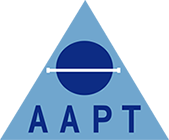News
Intra osseous devices: EZ-IO
Intra osseous devices are used by all ambulance Trusts across the country for paediatric arrests. Currently the South East Coast Ambulance Trust uses these devices for adult arrests as well.
Intra osseous devices are used by all ambulance Trusts across the country for paediatric arrests. Currently the South East Coast Ambulance Trust uses these devices for adult arrests as well.
As paediatric deaths are fortunately rare many mortuaries may not have come across this system of rapid cannulation but things may change and it helps to be prepared. The device is a sharp single lumen needle which is designed to be inserted into bone via a special drill. This then remains embedded in the bone’s medullary space for emergency drug and fluid access.
These devices are used by paramedics or Doctor’s on both paediatrics and adults to initiate cannulation via bone vasculature. Criteria for using intraosseous devices are that the patient has a very unstable life threatening condition and that the practitioner is unable to establish IV access after two attempts or 90 seconds of searching for a suitable vein.
The most common site for intraosseous access is the proximal tibia. Less common sites are the distal tibia and distal femur. These areas when cannulated with an intra osseous sharp can therefore be hidden from view via clothing or a shroud.
After the device has been implanted by the Doctor or paramedic a highly visible (fluorescent) wrist bracelet is attached to the patient to warn subsequent persons of the presence of this sharp. Either at post-mortem or when releasing the deceased patient to an undertaker (an opportunity to see the fluorescent wrist tag) these sharps need to be removed for everyone’s safety.
To remove the needle unit safely, attach a Luer lock syringe and continuously rotate clockwise while slowly and gently applying traction to the needle unit. Immediately after removal place into a sharps bin.
If you wish to find out more about these devices visit: http://www.vidacare.com/ez-io/index.html
Tina Mackay FAAPT
